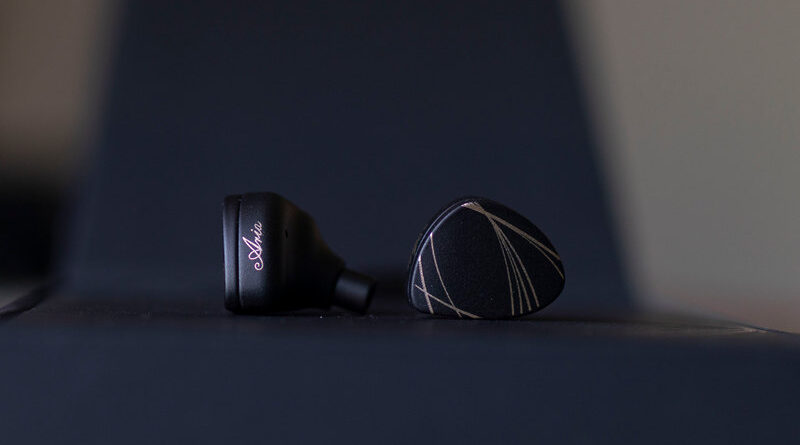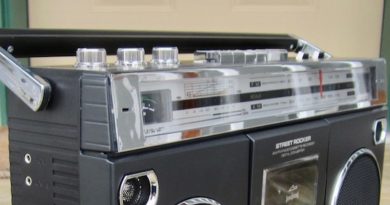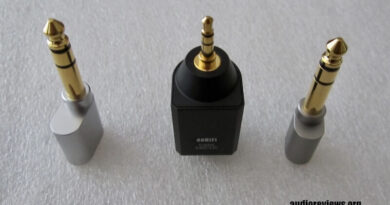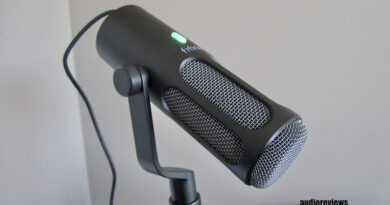Moondrop Aria (2021) Review (2) – The Big “Little” Upgrade
Pros — Great build quality
– Comfortable fit
– Punchy, textured bass that doesn’t bleed into mids
– Beautiful reproduction of acoustic guitars/strings
– Good stage width/height
– An overall dynamic presentation that’s one of the best in its price class
Cons — Stock cable forms kinks, gets tangled in pocket
– Somewhat soft transients
– Treble lacks sparkle, rolls-off early
– Soundstage depth/imaging is average
– Lower-mids can sound a bit recessed
INTRODUCTION
Moondrop needs no introduction nowadays after being one of the most consistent manufacturers out there in terms of releases and their adherence to hitting “target curves”, or a specific frequency-response in other words.
The Moondrop Aria 2 (2021) is their latest release that, on paper, succeeds their age-old model, the Aria (which had a shell similar to their now discontinued Crescent). Confusing naming schemes aside, the Aria refresh is nothing like the old model with a very different shell design along with a detachable cable (whereas the previous model had a fixed cable). Moreover, it seems to compete directly with their own Starfield and might even retire the old model given its lower price tag.
Let’s see if the new Aria 2 is a worthy refresh, and if it can carve itself a spot in the ultra-competitive budget segment.
Note: the ratings given will be subjective to the price tier. Nappoler Hu from HiFiGo was kind enough to send me the Moondrop Aria 2 for evaluation.
Sources used: Questyle CMA-400i, Sony NW-A55 (MrWalkman modded), LG G7
Price, while reviewed: $80. Can be bought from HiFiGo.
PHYSICAL THINGS AND USABILITY
PACKAGING AND ACCESSORIES
The packaging, in usual Moondrop fashion, has an anime box-art. Other than that the accessories are mostly standard: a cloth-braided cable, 6 pairs of eartips, a small carry case, a pair of tweezers to replace the nozzle filters, and some spare nozzle filters. While the tips and case works fine, I’m a bit annoyed with the stock cable. Now, it’s an upgrade over Starfield’s noodle-like cable but the ergonomics are poor and it gets tangled very easily. The sheathing is also stiff and forms kinks very easily. I’d recommend an upgrade cable if budget permits.
4/5
BUILD QUALITY
The build quality is excellent with an aluminium alloy housing. The matte black paintjob has a soft-touch finish and the rose-gold pattern on top adds a bit of character to the shells. There are two vents on the inner-side to alleviate pressure. The 2-pin ports are recessed which is great for long-term durability. Finally, the nozzle doesn’t have any lips to secure the tips but it does grip the tips better this time around (unlike the Starfield nozzles where tips would slip out). The paintjob also seems more durable than the Starfield one (which chipped off easily) but time will tell. So far so good.
5/5
COMFORT AND ISOLATION
Due to its snug-fit and lightweight nature, the Aria has very good wearing comfort. Isolation is above-average too and with the right tips you can drown out quite a bit of outside noise.
4.5/5
SOURCE AND EARTIPS
For the purpose of this review, I primarily used the Questyle CMA-400i and LG G7 as sources. The Aria 2 runs well on most sources, though with better sources it does seem to scale. I’ve found it to pair the best with Questyle CMA-400i but then again it’s a desk setup and costs quite a bit. On a budget, the LG G7 worked just fine, with the Sony NW-A55 providing a very dynamic and engaging presentation.
The stock tips are fine but I opted for Spinfit CP-145 as it seemed to slightly widen the stage without sacrificing on the tonality/technicalities.
DRIVER SETUP
Aria 2 opts for a 10mm LCP (Liquid-Crystal Polymer) along with an N52 magnet system. The voice coil is just 35 micron thick and there’s also a brass cavity on the back to reduce resonance. Finally, the high frequency waveguide disperses high-frequency waves to reduce resonance peaks. LCP diaphragms have been used in legendary single-DDs like the Sony EX-1000, though in that case the diaphragm size was much larger (16mm) and the diaphragm stiffness also reportedly higher. However, given the price constraint at play here (1/6th of the EX-1000ST) it’s great to see LCP diaphragm here instead of the more mainstream CNT, Ti/Be-plated PET, or DLC diaphragms (though the latter costs more usually).

One interesting tidbit: Moondrop recommends 100hrs of burning to ensure that the drivers are in “optimal” condition. They even provide some burn-in instructions in the user-manual (comes in the box). I usually don’t bother with IEM user-guides but this one time I’m glad I read it. Whether or not you’re a believer in burn-in, it’s interesting to see that Moondrop is recommending this as they’re usually very focused on measurements and such (burn-in usually doesn’t show up in FR graphs). I decided to follow the guidelines and burned-in for ~60 hours or so before forming my impressions. It doesn’t hurt after all.
TONALITY AND TECHNICALITIES
The Aria 2 has a warm, upper-mid centric presentation that has some similarities with the Harman In-ear target curve. Fortunately, the upper-mids aren’t as pronounced as the Harman IE target and the mid-bass has more body, resulting in a more even and natural transition from sub-bass to upper-bass and lower-mids subsequently.
The standout feature on this one has to be the bass response which, IMO, is one of the best under $100. The bass reaches all the way down to 20Hz and provides excellent rumble. Best of all: it doesn’t slope right away as it moves into the mid-bass unlike some recent IEM releases that gives rise to what I call “2.1 subwoofer effect” (you feel that the sub-bass is detached from the rest of the frequency). As a result, the bass frequencies are all well-portrayed and the sub-bass focus sounds tastefully done. Snare hits are authoritative, double-pedals have a full-bodied nature to them, and most of all male vocals don’t sound thinned-out. Bass texture is great, and bass speed is above-average.
As we move into the lower-mids, it does some warmth from the mid-bass bump but this is where I encounter my first issue with the Aria 2. The male vocals sound somewhat distant, although they’re perfectly intelligible. The finer articulations (vocalists inhaling/exhaling, subtle shifts in the delivery) are not as well portrayed as a result. Female vocals are much better portrayed however though again the lower-ranges suffer from recession. On the plus side, these are excellent when it comes to rendering acoustic guitars. The leading edge of guitars sound crisp while having a certain heft to them. Distortion guitars are not as well portrayed however due to less energy around the 4KHz region, but this also helps in reducing listening fatigue so there’s that.
Finally, the treble, and there’s not much to say here. It’s inoffensive without being boring. The treble rolls off fast post 11KHz and doesn’t really offer a lot of sparkle or air. Cymbal hits sound somewhat muted and the resonance after the hit is absent. There’s a slight peak ~10KHz in the official graph which seems more like driver resonance and didn’t really bother me during listening sessions. I should also add a note about the timbre which is very natural here and doesn’t suffer from the artificiality of the typical BA drivers (and even some metal-coated PET diaphragms).
Dynamics are quite good, especially macrodynamics are class-leading. Micro-dynamic shifts (gradual changes in volumes) are portrayed fairly well though some of the competition does that better. Staging is good overall in terms of width/height, though stage depth is lacking vs the higher-tier IEMs. Imaging is not as precise as I find on competing IEMs so I’d say it’s about average for the price bracket. Separation is good, however, owing to faster transients of the LCP diaphragm, though I do find the leading edge of notes to be somewhat soft which robs some instruments off of their excitement/engagement factor. The better transients also aids in complex tracks though the treble does seem to get drowned out in that case.
Overall, I find the Aria 2 to have a very versatile sound profile that works well across a variety of genres. The presentation is dynamic with a very natural timbre and excellent rendition of acoustic guitars/percussion instruments. Due to the wide stage, instruments aren’t congested and separation is very good as well. However, the male vocals might sound recessed, the imaging isn’t as precise as I hoped it to be, and stage depth/treble extension is lacking. Given its budget nature though, I’m willing to forgive a lot of that.
Bass: 4.5/5
Mids: 4/5
Treble: 4/5
Imaging/Separation: 3.5/5
Staging: 4/5
Dynamics/Speed: 4/5
Timbre: 4.5/5
SELECT COMPARISONS
vs Moondrop Starfield ($109): The Starfield received mostly rave reviews upon launch, though I myself found it very average on all fronts apart from the mid-range (vocals, to be specific). It was kind of a one-trick pony and I didn’t find the trick to be entertaining enough to warrant a super-positive review. I’d not discuss differences in build/accessories here as they are mostly similar (though Aria 2 cable is better).
The Aria 2 fixes most of my issues with the Starfield. The bass is much tighter with faster transients, acoustic guitars and percussion instruments don’t sound as “mushy” anymore, and the treble actually has some life in them. The stage is also wider and taller on the Aria 2, though stage-depth is similar on both (as in average). They measure similarly on FR but during listening the difference these technical upgrades are very noticeable. The one area where the Starfield trounces the Aria 2 is the vocal performance with Starfield having a more up-front/engaging vocal delivery. That’s about it though, and I’d pick the Aria 2 over the (more expensive) Starfield 11 out of 10 times.
vs Final E3000 ($50): The Final E3000 has long been one of my favorites under $100 and the Aria 2 has challenged it well for that throne. In terms of build quality, Aria 2 gets brownie points for having a detachable cable (though the supplied cable is far worse than E3000 stock cable). Both are very comfortable IEMs and offer good isolation.
The sound profile is quite different between them. The E3000 is a laid-back sounding IEM with warm, thick notes and an uncanny ability to separate the vocals from the rest of the instruments. In fact the biggest difference between the E3000 and the Aria 2 is how the former projects a wide, deep soundstage. Vocals are also more lush on the E3000, though they are even more recessed than the Aria 2. In terms of bass response, the Aria 2 is more sub-bass focused whereas the Final E3000 has mid-bass focus. Thus, the snare-hits/double-pedals sound even more substantial on the E3000 whereas Aria 2 can reproduce bass rumble better. Treble is about similar on both though the E3000 has slightly better sparkle and energy in the leading edge of cymbal hits. Imaging is also better on the E3000, though it falls behind the Aria 2 in complex tracks due to slower driver. Finally, microdynamics are superior on the E3000 with the Aria 2 having better macrodynamics.
One thing to note is the amping requirements which is higher on the E3000. Aria 2 is far easier to drive. All this makes the Aria 2 an easier pick for those who want more balance across the spectrum and don’t want to invest in a source. If you have a good source, however, the Final E3000 is still a very unique offering and will be right up your alley if you want a non-fatiguing, laid-back yet impressively wide presentation.
vs BLON BL-05S ($40): This is a comparison that many requested due to the BL-05S punching way above its price-tag in terms of technicalities. Let’s get into it, then.
In terms of build, the Aria 2 wins simply because of a more agreeable color, though I’m lately finding the BL-05S less of a turn-off. The stock accessories are also super-terrible on the BLONs so Moondrop gets an easy win here. Comfort/isolation is also better on the Aria 2.
Now, let’s get into the sound. The BL-05S has more focus on clarity with a more prominent upper-mids presence. The bass suffers on the BL-05S as a result with the Aria 2 having a superior bass response. In fact, the improvement in bass alone warrants an upgrade to the Aria 2 if you’re using BL-05S and need more “thump” in the lows. In the mids, I find the BL-05S to be better for female vocals and electric guitars. Treble also has more sparkle on the BL-05S though cymbals can sound a bit splashy at times on the BL-05S (which the Aria 2 avoids). Timbre is better on the Aria 2, so is soundstage width and height and the overall dynamics. Stage depth and imaging, however, is better on the BL-05S, so is the separation (surprisingly so).
It’s quite ironic that the BL-05S, despite being half as costly, is besting the Aria 2 in a few technical aspects (mainly imaging and separation). However, I find the Aria 2 an easier listen with far superior comfort/isolation and of course: bass. I can also see many getting both these IEMs to cover all bases (Aria 2 when you need a more smooth listen, BL-05S for the metal/rock sessions).
CONCLUDING REMARKS
The Moondrop Aria 2 is a wholesale upgrade over the Moondrop Starfield, despite the apparent similarity in the FR graph. I was very disappointed with the Starfield so the Aria comes as a form of redemption for the budget Moondrop offerings, among which I’ve only like the Crescent so far (and they don’t even make them anymore).
For me, the Aria 2 is now a default recommendation in the $100 range and renders many of its peers/predecessors irrelevant, if not unremarkable. It doesn’t excel in many technical aspects but as an all-round package it is very hard to beat. The stock accessories are good enough to get you going, the bass response is fantastic, the mids sound just right (albeit the lower-mids recession can sound a bit odd), and the treble is inoffensive for the most part aiding in long-term listening. Add to that good dynamics, separation, and stage width, and we’ve a new winner.
Well done, Moondrop, and I hope you guys keep it up.
MY VERDICT
4.25/5
A worthy upgrade to the Moondrop Starfield, and one of the best IEMs under $100.
DISCLAIMER
Get it from HiFiGo
Our generic standard disclaimer.
PHOTOGRAPHY
You find an INDEX of our most relevant technical articles HERE.








